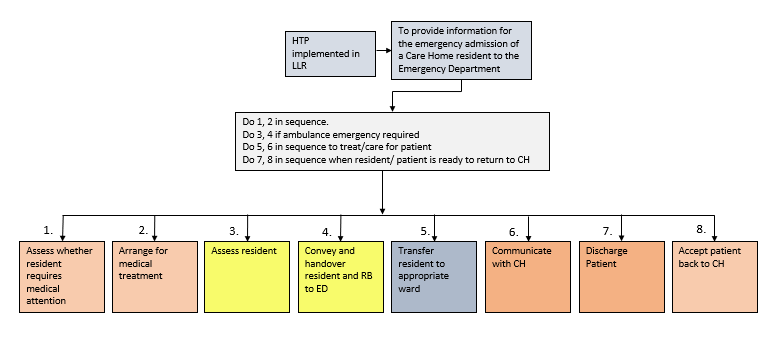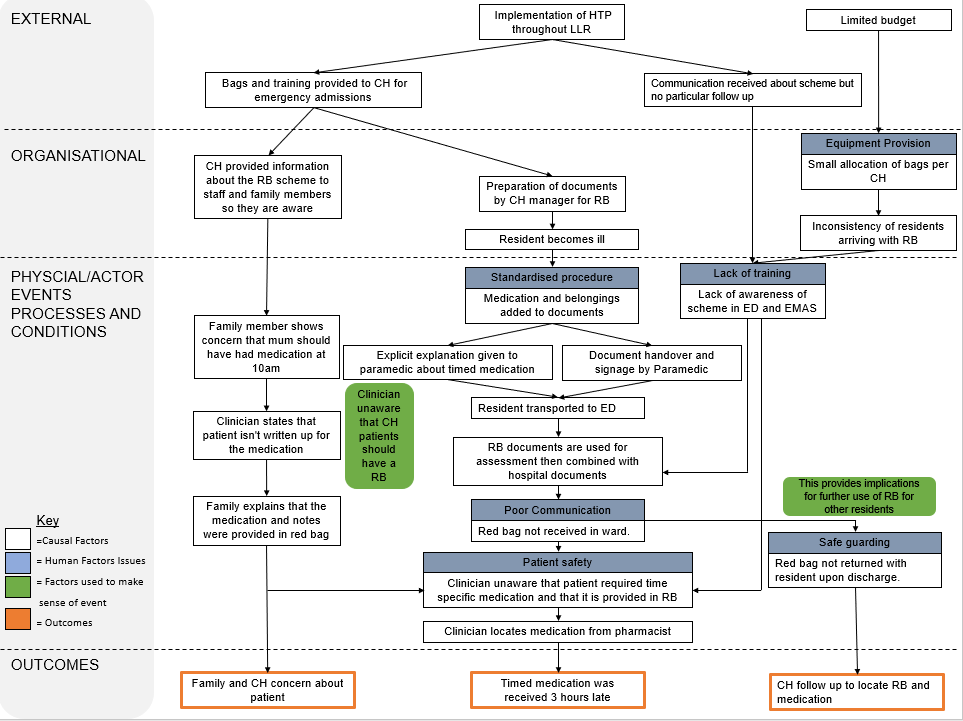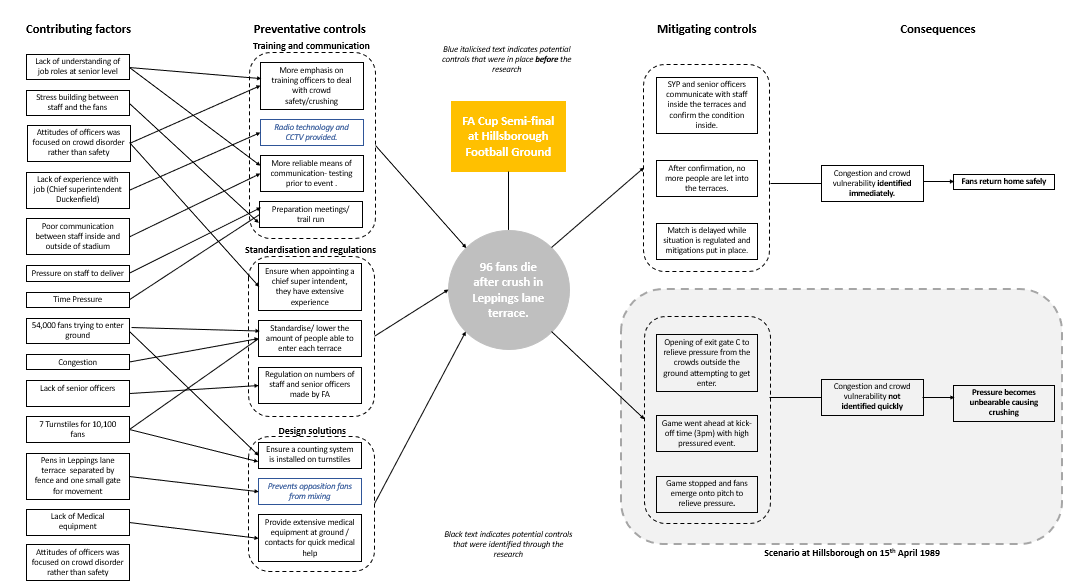
Final year project
Service evaluation of the Hospital Transfer ‘Red Bag’ Pathway in Leicester,… [Read more]

Final project: a service evaluation of the Hospital Transfer 'Red Bag' Pathway
The Hospital Transfer 'Red Bag' Pathway (HTP) is an NHS initiative implemented throughout the UK to assist care home residents through emergency admission to hospital. The initiative is designed to improve individual pathways and information sharing as well as improving resident experience.
The aim of the project was to conduct a service evaluation to define and measure current practice shown within the HTP initiative used throughout a specific service area. Its current use within this service area had proved difficult and therefore there was a need to evaluate its effectiveness, establishing inefficiencies.

Final project: Hierarchical Task Analysis of the Hospital Transfer Pathway
HTA is a central approach in Ergonomics and is used as a tool to represent system sub goal hierarchy, allowing for identification and evaluation of task logistics. In the instance of this project, HTA provided a framework of how the pathway should function. This allowed for development of appropriate interview questions and was utilised throughout the project as a tool for comparison.
The image here is a top level representation of the HTA, however it was developed further in the project.

Final project: an AcciMap representation of an adverse outcome when using the HTP
A systems approach was utilised in the discussion of the project to understand the issues raised from a whole system perspective. An AcciMap was developed in this scenario as a tool to uncover the interactions found within different levels of the system, allowing for identification of non-linear relationships. With healthcare being such a complex system, systems modelling was deemed an appropriate tool for discussion of this subject.

Inclusive Design: ageing, disability and vulnerability: empathic modelling
The Inclusive Design module enabled me to understand how other individuals may utilise products and services whilst also gaining insight into the ever changing population and its implications on society.
The image above illustrates a product assessment using specialised goggles to emulate tunnel vision. Empathic modelling is a tool used by researchers and designers to simulate disability by putting themselves in other peoples situations. This method of assessment was used throughout the module.

Systems Ergonomics: a systems representation of the Hillsborough Disaster
The Bow Tie analysis method was utilised in this project to analyse and demonstrate the causal factors that led to the outcomes at Hillsborough in 1989. The model also identifies control measures that should be taken to avoid incidents similar to this happening in the future.
Megan Annie Meredith
My work focuses on going beyond what is seen on the surface by exploring non-linear interactions to uncover system inefficiencies.
Human Factors is a discipline that is predominant in many industries, even if at first it may not seem obvious. Throughout my work, I have utilised human factors principles to uncover complex human interactions looking beyond a blame culture. As well as this, I have ensured I empathise with individuals to provide a greater understanding of the human element seen within systems, products and their interfaces.
The Complex Systems module has played a huge part in understanding this aspect of Human Factors and has in fact, been a predominant way of thinking throughout my final year project.
Final year project
Service evaluation of the Hospital Transfer ‘Red Bag’ Pathway in Leicester, Leicestershire and Rutland
Awards
'20 Diploma in Professional Studies
Placements
September 2018 - August 2019
Human Factors Industrial Student , Atkins